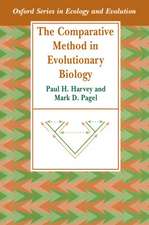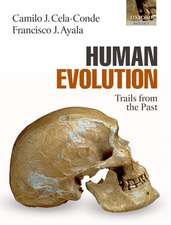Howler Monkeys: Behavior, Ecology, and Conservation: Developments in Primatology: Progress and Prospects
Editat de Martín M. Kowalewski, Paul A. Garber, Liliana Cortés-Ortiz, Bernardo Urbani, Dionisios Youlatosen Limba Engleză Hardback – 5 dec 2014
This volume:
· Examines behavioral and physiological mechanisms that enable howler monkeys to exploit highly disturbed and fragmented habitats
· Presents models of howler monkey diet, social organization, and mating systems that can also inform researchers studying Old World colobines, apes, and other tropical mammals
These goals are achieved in a collection of chapters written by a distinguished group of scientists on the feeding ecology, behavior, mating strategies, and management and conservation of howlers. This book also contains chapters on the howler microbiome, the concept of behavioral variability, sexual selection, and the role of primates in forest regeneration.
| Toate formatele și edițiile | Preț | Express |
|---|---|---|
| Paperback (2) | 951.59 lei 6-8 săpt. | |
| Springer – 22 sep 2016 | 951.59 lei 6-8 săpt. | |
| Springer – 22 sep 2016 | 952.26 lei 6-8 săpt. | |
| Hardback (2) | 957.75 lei 6-8 săpt. | |
| Springer – 16 dec 2014 | 957.75 lei 6-8 săpt. | |
| Springer – 5 dec 2014 | 958.56 lei 6-8 săpt. |
Din seria Developments in Primatology: Progress and Prospects
- 20%
 Preț: 571.31 lei
Preț: 571.31 lei - 18%
 Preț: 1216.65 lei
Preț: 1216.65 lei - 19%
 Preț: 578.66 lei
Preț: 578.66 lei - 18%
 Preț: 956.69 lei
Preț: 956.69 lei - 18%
 Preț: 948.92 lei
Preț: 948.92 lei - 18%
 Preț: 948.92 lei
Preț: 948.92 lei - 18%
 Preț: 945.79 lei
Preț: 945.79 lei - 18%
 Preț: 962.66 lei
Preț: 962.66 lei - 18%
 Preț: 1664.43 lei
Preț: 1664.43 lei - 18%
 Preț: 1224.54 lei
Preț: 1224.54 lei - 24%
 Preț: 826.25 lei
Preț: 826.25 lei - 24%
 Preț: 802.74 lei
Preț: 802.74 lei - 18%
 Preț: 1562.94 lei
Preț: 1562.94 lei - 18%
 Preț: 950.21 lei
Preț: 950.21 lei - 18%
 Preț: 943.73 lei
Preț: 943.73 lei - 18%
 Preț: 1549.67 lei
Preț: 1549.67 lei - 18%
 Preț: 1248.20 lei
Preț: 1248.20 lei - 18%
 Preț: 941.38 lei
Preț: 941.38 lei - 24%
 Preț: 800.85 lei
Preț: 800.85 lei - 18%
 Preț: 953.35 lei
Preț: 953.35 lei - 18%
 Preț: 1827.48 lei
Preț: 1827.48 lei - 18%
 Preț: 1209.52 lei
Preț: 1209.52 lei - 18%
 Preț: 957.62 lei
Preț: 957.62 lei - 18%
 Preț: 1231.47 lei
Preț: 1231.47 lei - 18%
 Preț: 1225.48 lei
Preț: 1225.48 lei - 5%
 Preț: 1433.83 lei
Preț: 1433.83 lei - 18%
 Preț: 1231.16 lei
Preț: 1231.16 lei - 18%
 Preț: 1226.90 lei
Preț: 1226.90 lei - 18%
 Preț: 955.25 lei
Preț: 955.25 lei - 18%
 Preț: 956.03 lei
Preț: 956.03 lei - 18%
 Preț: 1218.53 lei
Preț: 1218.53 lei - 18%
 Preț: 950.52 lei
Preț: 950.52 lei -
 Preț: 416.82 lei
Preț: 416.82 lei - 18%
 Preț: 1554.89 lei
Preț: 1554.89 lei
Preț: 958.56 lei
Preț vechi: 1168.98 lei
-18% Nou
Puncte Express: 1438
Preț estimativ în valută:
183.42€ • 192.02$ • 151.77£
183.42€ • 192.02$ • 151.77£
Carte tipărită la comandă
Livrare economică 05-19 aprilie
Preluare comenzi: 021 569.72.76
Specificații
ISBN-13: 9781493919598
ISBN-10: 1493919598
Pagini: 460
Ilustrații: XIX, 440 p. 53 illus., 20 illus. in color.
Dimensiuni: 155 x 235 x 30 mm
Greutate: 0.82 kg
Ediția:2015
Editura: Springer
Colecția Springer
Seria Developments in Primatology: Progress and Prospects
Locul publicării:New York, NY, United States
ISBN-10: 1493919598
Pagini: 460
Ilustrații: XIX, 440 p. 53 illus., 20 illus. in color.
Dimensiuni: 155 x 235 x 30 mm
Greutate: 0.82 kg
Ediția:2015
Editura: Springer
Colecția Springer
Seria Developments in Primatology: Progress and Prospects
Locul publicării:New York, NY, United States
Public țintă
ResearchCuprins
PART 1. INTRODUCTION.- Chapter 1. Why is it Important to Continue Studying the Behavioral Ecology and Conservation Management of Howler Monkeys?.- PART 2: BEHAVIORAL ECOLOGY.- Chapter 2. Diets of Howler Monkeys.- Chapter 3. Insights into Reproductive Strategies and Sexual Selection in Howler Monkeys.- Chapter 4. Evidence of Alternative Dietary Syndromes and Nutritional Goals in the Genus Alouatta.- Chapter 5. Seed Dispersal by Howler Monkeys: Current Knowledge, Conservation Implications, and Future Directions.- Chapter 6. Interactions of Howler Monkeys with Other Vertebrates: A Review.- Chapter 7. Solving the Collective Action Problem During Intergroup Encounters: The Case of Black and Gold Howler Monkeys.- Chapter 8. Howler Monkey Positional Behavior.- Chapter 9. Ranging Behavior and Spatial Cognition of Howler Monkeys.- PART 3: CONSERVATION AND MANAGEMENT.- Chapter 10. The Ethnoprimatology of Howler Monkeys (Alouatta spp.): From Past to Present.- Chapter 11. Anthropogenic Habitat Modification, Tourist Interactions and Crop-Raiding in Howler Monkeys.- Chapter 12. Health and Welfare of Howler Monkeys in Captivity.- Chapter 13. Fruit as a Key Factor in Howler Monkey Population Density: Conservation Implications. Chapter 14. Conservation of Alouatta: Social and Economic Drivers of Habitat Loss, Information Vacuum and Mitigating Population Declines.- PART 4: CONCLUSION.- Chapter 15. New Challenges in the Study of Howler Monkey Behavioral Ecology and Conservation: Where we are and where we need to go?.
Textul de pe ultima copertă
Howler monkeys (genus Alouatta) comprise twelve species of leaf-eating New World monkeys that range from southern Mexico through northern Argentina. This genus is the most widespread of any New World primate taxa, and can be found to inhabit a range of forest types from undisturbed rainforest to severely anthropogenically impacted forest fragments. Although there have been many studies on individual species of howler monkeys, this book is the first comprehensive volume to place information on howler behavior and biology within a theoretical framework of ecological and social adaptability. This is the second of two volumes devoted to the genus Alouatta.
This volume:
· Examines behavioral and physiological mechanisms that enable howler monkeys to exploit highly disturbed and fragmented habitats
· Presents models of howler monkey diet, social organization, and mating systems that can also inform researchers studying Old World colobines, apes, and other tropical mammals
These goals are achieved in a collection of chapters written by a distinguished group of scientists on the feeding ecology, behavior, mating strategies, and management and conservation of howlers. This book also contains chapters on the howler microbiome, the concept of behavioral variability, sexual selection, and the role of primates in forest regeneration.
This volume:
· Examines behavioral and physiological mechanisms that enable howler monkeys to exploit highly disturbed and fragmented habitats
· Presents models of howler monkey diet, social organization, and mating systems that can also inform researchers studying Old World colobines, apes, and other tropical mammals
These goals are achieved in a collection of chapters written by a distinguished group of scientists on the feeding ecology, behavior, mating strategies, and management and conservation of howlers. This book also contains chapters on the howler microbiome, the concept of behavioral variability, sexual selection, and the role of primates in forest regeneration.
Caracteristici
Examines howler behavior and ecology within a comparative framework Examines behavioral and physiological mechanisms that enable howler monkeys to exploit highly disturbed and fragmented habitats Presents models of howler monkey diet, social organization, and mating systems that can inform researchers studying Old World colobines, apes, and other tropical mammals Includes supplementary material: sn.pub/extras
Recenzii
“Howler monkeys are among the best studied and most successful adaptive radiations of Neotropical primates. … This volume … exemplifies that approach by focusing on howler monkeys’ evolution and morphology, and changing views of their systematics. … Summing Up: Recommended. Upper-division undergraduates through researchers/faculty.” (L. K. Sheeran, Choice, Vol. 52 (11), July, 20115)

























